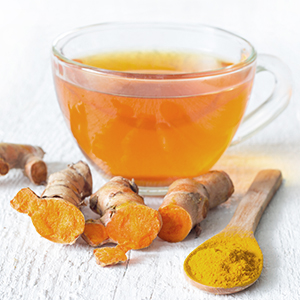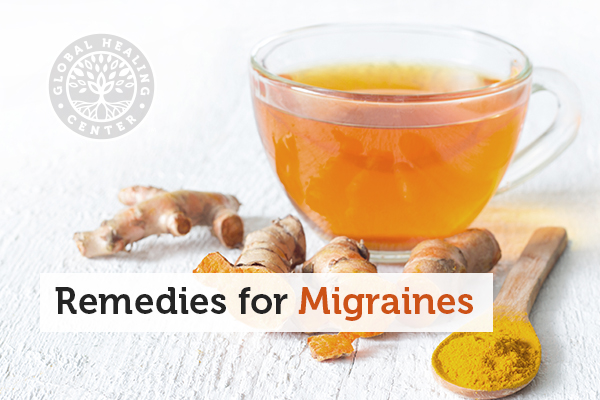

There are headaches — and then there are migraines. About one in ten people experience these types of headaches, which bring intense pain and other symptoms. While some sufferers only get migraines occasionally, others have them several times a month, and they significantly interfere with daily life.
The good news: Research shows that many migraine remedies, including natural herbs and supplements, provide effective relief and reduce the need for medication. These natural therapies can not only decrease the number of migraines you experience but also lessen the severity when one strikes.
What Is a Migraine?
People describe migraine headaches as pulsing, pounding, or throbbing pain, often occurring on one area of the head. For some people, the pain is accompanied by sensitivity to light and sometimes nausea or vomiting. Bottom line? Migraines hurt.
One in four migraine sufferers also experiences “aura" — sensory disturbances that occur before a migraine strikes. The most common are spots, flashing lights, zigzags, or blind spots. Patients may also have tingling or numbness on one side of the body or face or problems with speech, such as slurred speech or the inability to find the right word.
Common Migraine Symptoms
- Pulsing, pounding, or throbbing pain
- Pain on one side of the head
- Nausea or vomiting
- Sensitivity to light or noise
- Aura — sensory disturbances that are usually visual, but sometimes verbal or motor.
17 Home Remedies for Migraines
Although many people turn to over-the-counter drugs like ibuprofen or prescription medications, home remedies can serve as an effective first line of defense against migraines. The following natural remedies can often ease the pain of migraines.
1. Ice Pack
Just putting ice or a cold washcloth on your neck or head during a migraine can help quell the pain by cooling the blood that's flowing through the carotid arteries, thus calming inflammation. A 2013 study showed that using a frozen neck wrap at the onset of a migraine significantly reduced migraine pain.[1]
2. Darkness
Most migraine sufferers experience sensitivity to light, also known as photophobia. The brighter the light, the more painful the headache. So, taking refuge in a cool, darkened room can help alleviate the pain.
3. Caffeine
Consuming caffeine or changing your caffeine intake — increasing or decreasing it — can trigger migraines in some people. Sometimes, a small amount of caffeine can help provide pain relief, which is why it's an ingredient in common over-the-counter migraine medications.
4. Exercise
There's evidence that exercise helps prevent migraines. At a minimum, it helps with stress, which can contribute to migraines.[2] Work out three days a week for at least 30 minutes to reduce the frequency and severity of migraine headaches.
5. Feverfew
Feverfew is one of several popular herbs that, according to research, is effective for migraine headaches. In one study, migraine patients who used feverfew experienced significantly fewer headaches than those taking a placebo.[3]
6. Vitamin B-2
The B vitamins, particularly B-2 (riboflavin), are often used for migraines. Studies show that vitamin B-2 lowers their frequency of occurrence.[4]
7. Yoga
Yoga is particularly beneficial for migraine pain. In a 2007 study where migraine patients were randomly told to engage in either yoga or self-care, those who practiced yoga had substantial reductions in headache intensity and frequency and migraine medication use, and lessened symptoms of anxiety and depression.[5]
8. Magnesium
Magnesium has a long history of easing migraine misery. Data from a large study found that patients taking 600 milligrams per day of the mineral saw a 41 percent reduction in the frequency of migraines compared to 15 percent in the group who took a placebo pill.[6]
9. Peppermint Tea
Peppermint tea is a centuries-old cure for nausea, which sometimes accompanies a migraine. There's evidence that it can relieve pain, too. You can add the crushed dried leaves to hot water for a delicious herbal tea or buy it in the store.
10. Ginger Tea
Consider Ginger tea when you feel migraine or other headache pain. Data shows that ginger powder may relieve migraine pain as well as common migraine drugs known as "triptans."[7]
11. Willow Bark
People have used willow bark for centuries for many types of pain, including headaches, although there is little data on its usefulness. It contains salicin, which is chemically similar to the salicylic acid in aspirin. You can take it as a supplement or find it in herbal teas.
12. Acupuncture
Authors of a recent review of studies found that completing at least eight weeks of acupuncture treatments worked as effectively as medicine for reducing the number of migraines patients experienced by 50 percent.[8] The study also found that acupuncture treatments were more effective than "sham" treatments which use needles but not on traditional locations on the body.
13. Butterbur
The botanical butterbur appears to help prevent migraines without producing significant side effects. In one study, butterbur extract was found to reduce both the number of migraines patients got and the number of days they had migraine pain.[9] Some 75 percent of people taking the herb reported improvement, as compared to only 20 percent in the placebo group.
14. Essential Oils
Several essential oils work well to counter migraine pain and symptoms. Data showed that applying peppermint oil to the forehead and temples was significantly more effective than a placebo in alleviating migraine pain.[10] If you are sensitive to undiluted oils, you can dilute them with a carrier oil, such as coconut oil. Inhaling lavender oil reduced migraine pain in less than 15 minutes in another study.[11] Chamomile oil, inhaled or added to a warm bath, may ease anxiety and sleeplessness related to migraine pain.
15. Cayenne Pepper
Migraines may respond to capsaicin, the active ingredient in cayenne. Dab a small amount of a capsaicin gel or cream inside each nostril or use a capsaicin nasal spray. In a 2014 study of headache sufferers who used a capsaicin nose spray, 72 percent felt relief.[12] Expect a burning sensation, runny nose, and sneezing for a few minutes after the application. Do not use too much, especially when you are trying it for the first time.
16. Apple Cider Vinegar
Famous for helping with weight loss, apple cider vinegar may also reduce migraine pain. Dip a cloth in the vinegar and apply it as a cool compress to your forehead. You can also try drinking it. Simply add a couple of tablespoons to eight ounces of distilled water.
17. Massage
The right pressure on your body and scalp could vanquish your migraine pain. A 2006 study found that patients who got massages for five weeks had fewer migraines and better sleep quality than those who didn't get the weekly rub-downs.[13]
What Causes Migraines?
From disruptions to the flow of blood in the brain to neurological issues, migraines can be triggered by a host of issues, including:
- Loud noise and sounds
- Smells
- Bright lights
- Irregular sleep
- Caffeine
- Weather changes
- Stress
- Fatigue
- Medications
- In women, hormonal changes
- Foods
Additionally, the National Institutes of Health believes that a predisposition for migraines may be genetic.[14]
Foods That Trigger Migraines
Various foods trigger headaches for many migraine sufferers, though it's different for everyone. If you want to discover if you have any food triggers for your migraines, keep a diary and log your diet daily, marking down when you have a migraine. You may be able to identify which, if any, foods are connected to your pain. According to the National Headache Foundation, these foods are common migraine triggers:[15]
- Ripened cheese — cheddar, Emmentaler, Stilton, Brie, and Camembert
- Herring — pickled or dried
- Chocolate
- Anything fermented, pickled, or marinated
- Sour cream
- Nuts
- Peanut butter
- Sourdough bread
- Broad beans, lima beans, fava beans, and snow peas
- Foods containing monosodium glutamate (MSG)
- Figs, raisins, papayas, avocados, and red plums
- Citrus fruit
- Bananas
- Pizza
- Sausage, bologna, pepperoni, salami, summer sausage, and hot dogs (contain the preservatives nitrates and nitrites)
- Chicken liver and pâté
- Alcoholic beverages
How Long Can Migraines Last?
Migraine length depends on the individual. But generally speaking, untreated migraines can last between four hours and three days. Check with your doctor or healthcare provider if they last longer or you are unable to find relief.
Points to Remember
Migraines are intense, painful headaches that affect your quality of life. Fortunately, you can look to nutrition for natural remedies for headaches and migraines.
Many people get migraine relief from supplements and herbs, including magnesium and feverfew, yoga, essential oils like lavender and peppermint, acupuncture, massage, and tea, such as peppermint and ginger. These methods can help to beat the intensity and frequency of migraines and their symptoms.
The post 17 Home Remedies for Migraines That Really Work appeared first on Dr. Group's Healthy Living Articles.
source https://www.globalhealingcenter.com/natural-health/home-remedies-for-migraines/
No comments:
Post a Comment